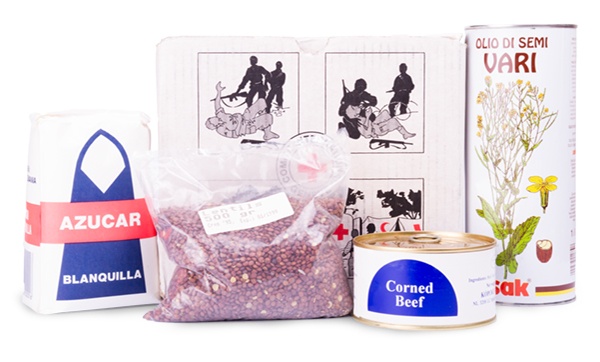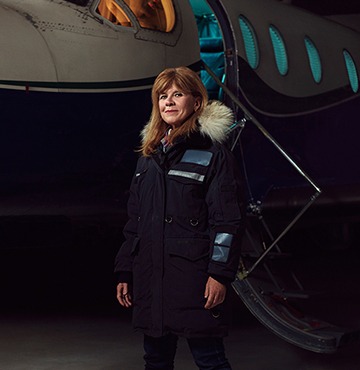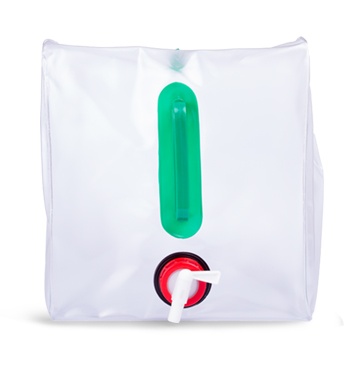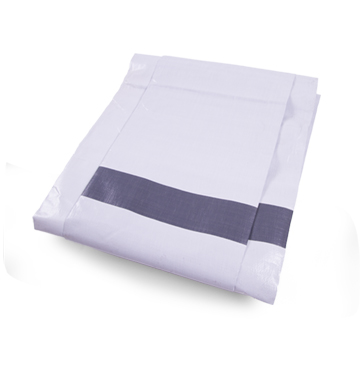ICRC Food Parcel
In 1999, both the Canadian Red Cross and Russian Red Cross (RRC) partnered with the International Committee of the Red Cross (ICRC) to get aid parcels to some of the world’s most remote communities in Russia.
With temperatures sometimes minus 50 degrees centigrade and extreme wind and snow, support was planned for over 700,000 people in the far northeast territories of Chukotka, Koryak, Magadan and Kamchatka.
A large focus was placed on getting aid to children, women and the elderly, who were living without adequate food, fuel and medical supplies due to limited shipping routes.
As a result, alcoholism, depression and a slew of other health issues began to arise. Healthcare became very scarce and treatable diseases such as tuberculosis, venereal disease and many more conditions began to ravage the population. Infant mortality rates skyrocketed and anemia was prevalent among pregnant women.
Over 40 small community projects received $250,000 in funding, including a greenhouse for a boarding school and a vocational school teaching youth traditional handicrafts and contemporary art. Projects also provided fishing equipment to Indigenous communities and support to reindeer farmers. The Government of Canada provided a total of $1.45 million to fund these initiatives.
The Red Cross quickly sprang into action, putting together 90,000 food parcels (similar to this one shown), 30,000 hygiene parcels, 10,000 sets of clothes and boots for children, 300 district hospital kits, 250 health care centre kits, 8,000 blankets, 8,000 sets of bed linen and 2,000 first aid kits.
The food parcels were 10 kilograms each and consisted of 2 kg of wheat flour, 1 kg of sugar, 2 kg of macaroni, 1 litre of vegetable oil, 2 tins of canned meat, 2 tins of condensed milk, 1 kg of semolina and 0.5 kg of tea.
The hygiene parcels contained 1.5 kg of household soap, 0.5 kg toilet soap, and 20 candles. Ten thousand sets of children's clothes (warm jackets, trousers, and boots) were also provided.
In addition to the aid parcels, the Canadian Red Cross and ICRC also worked to maximize the use of available local resources (human, goods, and services), strengthen local capacities by providing infrastructure support and training to the RRC National Headquarters and branches as well as social welfare institutions collaborating with the RRC.
In 1999, both the Canadian Red Cross and Russian Red Cross (RRC) partnered with the International Committee of the Red Cross (ICRC) to get aid parcels to some of the world’s most remote communities in Russia.
With temperatures sometimes minus 50 degrees centigrade and extreme wind and snow, support was planned for over 700,000 people in the far northeast territories of Chukotka, Koryak, Magadan and Kamchatka.
A large focus was placed on getting aid to children, women and the elderly, who were living without adequate food, fuel and medical supplies due to limited shipping routes.
As a result, alcoholism, depression and a slew of other health issues began to arise. Healthcare became very scarce and treatable diseases such as tuberculosis, venereal disease and many more conditions began to ravage the population. Infant mortality rates skyrocketed and anemia was prevalent among pregnant women.
Over 40 small community projects received $250,000 in funding, including a greenhouse for a boarding school and a vocational school teaching youth traditional handicrafts and contemporary art. Projects also provided fishing equipment to Indigenous communities and support to reindeer farmers. The Government of Canada provided a total of $1.45 million to fund these initiatives.
The Red Cross quickly sprang into action, putting together 90,000 food parcels (similar to this one shown), 30,000 hygiene parcels, 10,000 sets of clothes and boots for children, 300 district hospital kits, 250 health care centre kits, 8,000 blankets, 8,000 sets of bed linen and 2,000 first aid kits.
The food parcels were 10 kilograms each and consisted of 2 kg of wheat flour, 1 kg of sugar, 2 kg of macaroni, 1 litre of vegetable oil, 2 tins of canned meat, 2 tins of condensed milk, 1 kg of semolina and 0.5 kg of tea.
The hygiene parcels contained 1.5 kg of household soap, 0.5 kg toilet soap, and 20 candles. Ten thousand sets of children's clothes (warm jackets, trousers, and boots) were also provided.
In addition to the aid parcels, the Canadian Red Cross and ICRC also worked to maximize the use of available local resources (human, goods, and services), strengthen local capacities by providing infrastructure support and training to the RRC National Headquarters and branches as well as social welfare institutions collaborating with the RRC.





